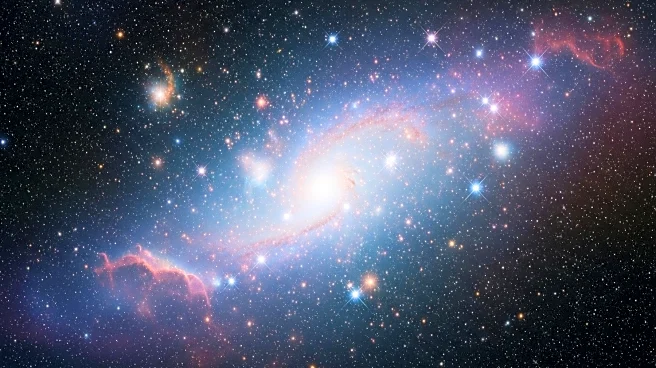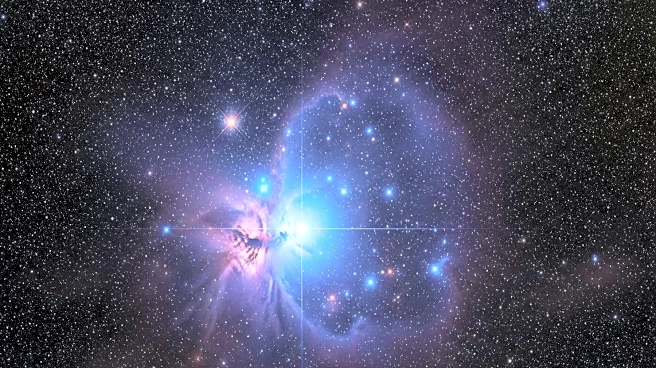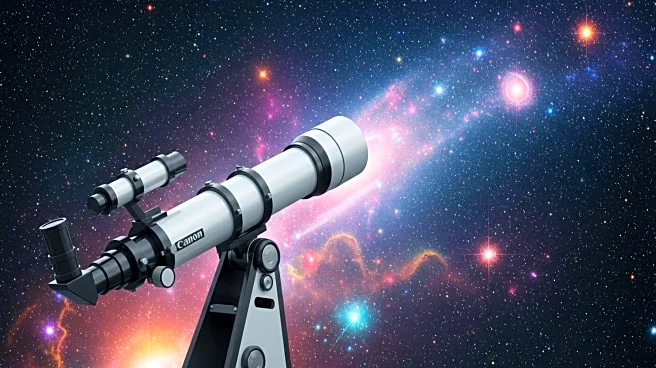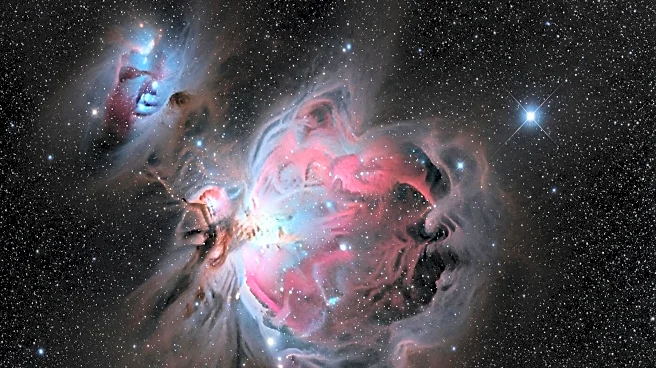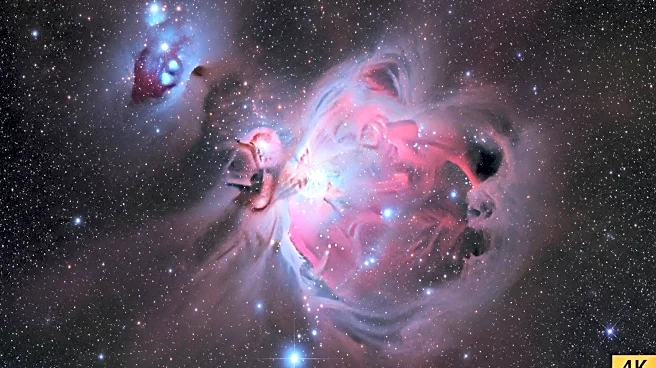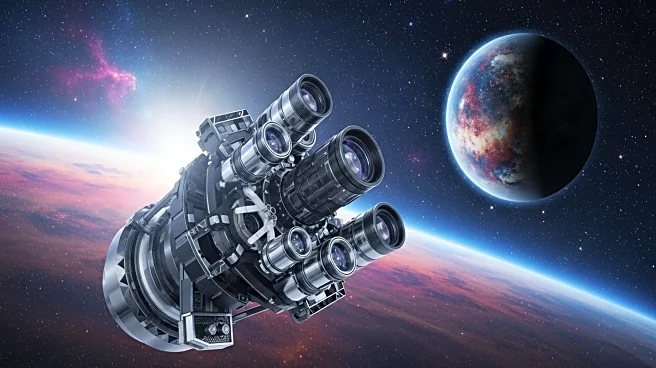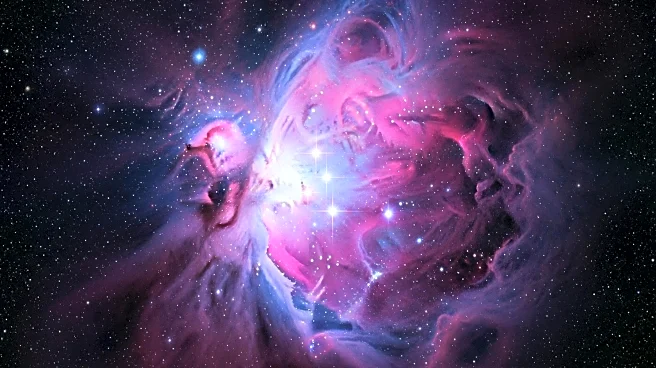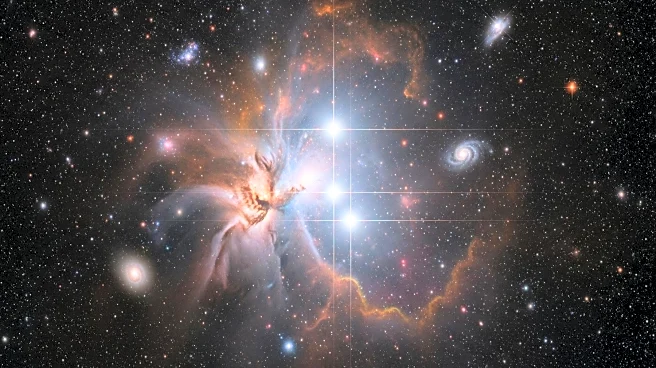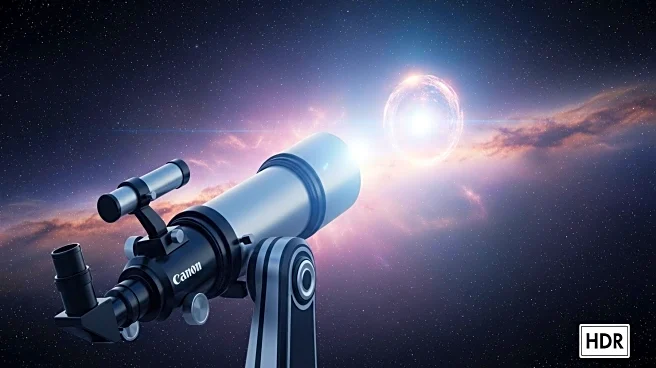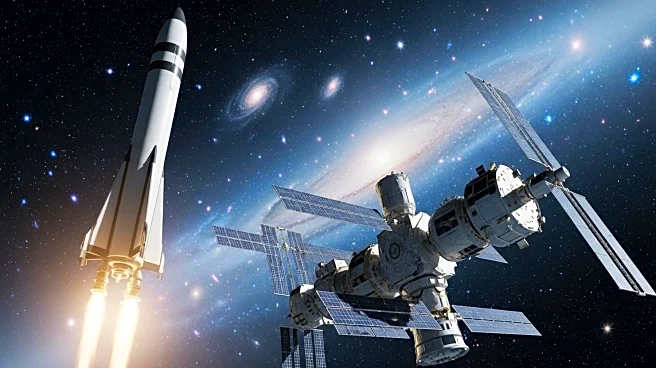What's Happening?
NASA's Webb Space Telescope has released a new image showcasing thousands of newborn stars in the star cluster Pismis 24, located 5,500 light-years away in the constellation Scorpius. The image reveals a dramatic cloud of star-forming dust and gas, known as the Lobster Nebula, which is so massive that it extends beyond the camera's view. The Webb Telescope, launched in 2021, is the largest and most powerful telescope ever sent into space, capable of viewing the universe in infrared. This recent snapshot took over five hours to capture, providing a breathtaking view of the star-birthing center.
Why It's Important?
The Webb Space Telescope's ability to capture detailed images of star formation is crucial for advancing our understanding of the universe. By observing the processes involved in star birth, scientists can gain insights into the lifecycle of stars and the formation of planetary systems. This knowledge is essential for understanding the conditions that lead to the development of habitable environments and the potential for life beyond Earth. The telescope's infrared capabilities allow it to penetrate dense clouds of gas and dust, revealing phenomena that are otherwise obscured, thus expanding our comprehension of cosmic events.
Beyond the Headlines
The Webb Telescope's observations contribute to the broader field of astrophysics by providing data that can be used to test and refine theoretical models of star formation and evolution. The ability to observe distant star clusters also aids in mapping the structure and dynamics of our galaxy, offering clues about its history and development. Furthermore, the telescope's findings may have implications for the search for extraterrestrial life, as understanding star formation is key to identifying regions where life-supporting planets might exist.
